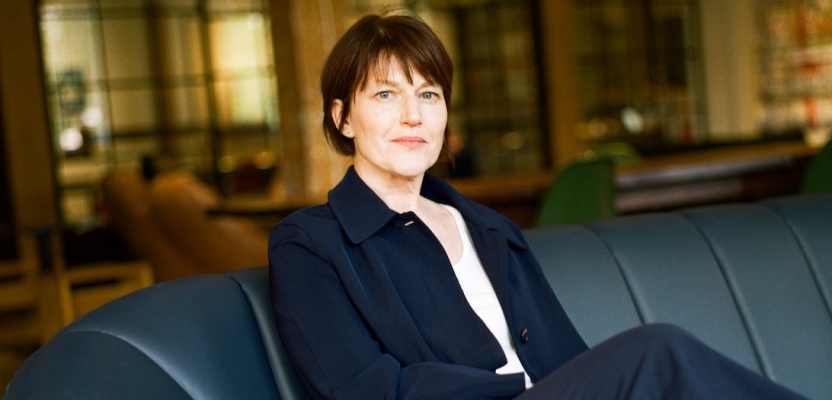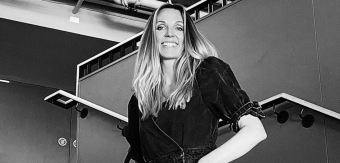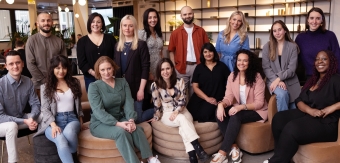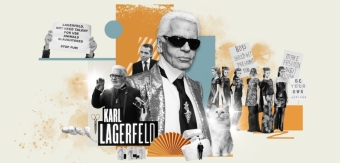Laura Stein, Chief Creative Officer at Bruce Mau Design, boasts a career marked by a unique blend of artistry, collaboration, and a deep understanding of brand identity. In this insightful interview, she takes us behind the scenes of her role, sharing her journey from touring musician to creative leader, her thoughts on the evolving design landscape, and her vision for a more sustainable future.
Whether she’s guiding a team through the nuances of a rebrand or finding inspiration in the great outdoors, Laura’s approach to design is as thoughtful as it is innovative.
Tell us a bit about your role! Is there a “typical” day?
I spend some of my time thinking about the studio as a whole - solving problems, or focusing on different initiatives about process, culture, marketing, etc. And I spend the rest of my time in work sessions or design reviews, The content of those reviews can be vastly different. I might be looking at signage materials, or typeface options, workshop plans or brand voice articulations with the teams who are deep in the work.
What is your personal background and what role did it play in your career?
I took a winding path to get to design but everything I’ve been interested in has made its way into the way I approach things. Biggest pieces are probably playing and touring in a band — I learned to collaborate — and doing a degree in Fine Art — I learned to work conceptually. I had an aha moment years ago when I was working on a book and it was fine but boring. My boss (see question 6) told me to think like an artist and really push on the content and structure and subsequent form. It opened my eyes like nothing else.

I also have had the opportunity to do projects that are all about music. I led the Sonos brand identity - rolling it out across packaging, digital, retail, social, you name it. We recently worked with Wrensilva to do a similarly holistic rebrand. I feel special affinity to those projects.
What is your biggest career-related win? What is your biggest loss?
It’s hard to say all-time win but certainly I was deeply excited to work on the identity for The National Ballet of Canada this past year. It was an opportunity to work with an ambitious leader with a big vision and a respected company that was ready for change. Perfect storm. I also love work that holds what we call “productive tensions”, which always makes things interesting, and this one held many.
I would have to say losing the competition to work on the Tate Museum’’s identity. I love the Tate, especially the Modern and its incredible installations. Nursing our wounds in a pub in London was not the worst thing but I would have felt much better celebrating. In the end, they didn’t really change the identity, just the way it was used. Which was probably valuable.
Which individuals and/or agencies do you gain inspiration from? Do you have any heroes in the industry?
I’ll start with Bruce Mau, the founder of our design agency.. I learned so much working with him about approach and what design can mean for the world we’re living in.
I am also inspired by Gemma Butler and Michelle Carvill, from Can Marketing Save the Planet? It’s my favorite podcast. Their new book is on my to-read list. They’re smart, upbeat, direct and ask great questions.
What advice would you give to your younger self?
Everyone makes mistakes. Don’t sweat it, keep moving.
If you weren’t in your current industry, what would you be doing?
Hopefully hiking in the woods somewhere.
What’s your one big dream for the future of the industry?
I’d love to see this industry become champions of the sustainability movement. At all levels – in terms of the clients we say no to, or clients we say yes to, in terms of understanding the actual things we put out into the world and their impact, in terms of amplifying and elevating the ideas that are critical to our collective future.
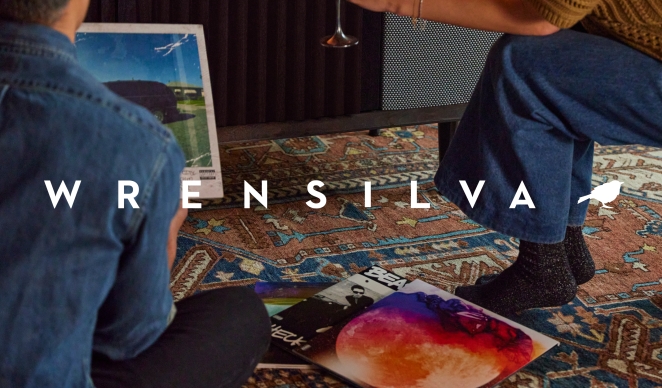
Most design agencies are project-based, meaning it’s hard to even stay afloat! But I hope it gets easier as things gain momentum and more industries work sustainably.
What are your top tips for aspiring creative professionals?
Look at every project as an opportunity to learn or flex, regardless of the attractiveness of the project itself. Some projects seem unsexy but can be a great playground.
Everyone has their own super powers. Find yours and build on it.
Love constraints. They can force you to focus and come up with new solutions.
What are your top tips for other creative leaders?
Make time for thinking and making, or even just thinking, It’s easy to get into a rut of running from thing to thing, meeting to meeting. And it doesn’t help keep you creative.
Nurture culture. That doesn’t necessarily mean having lots of parties and afterwork drinks, but more about shared creative experiences, learning together, relying on each other, and definitely laughing together.
Define “good”. It’s not the same for every agency or studio. Ensure people know what it is. Celebrate work that’s good.
When you think about your team, what is the thing that matters to you the most?
That they use each project experience to learn, explore, and push. It’s exciting to see designers experiment and develop unusual ideas and solutions that still answer the heart of the brief.
How do you approach collaboration with other creatives or teams and what do you believe makes for successful partnerships?
I love working with other people. But collaboration can be hard! It requires respect and honesty and a willingness to consider that maybe you don’t have the best idea or process. The best partnerships start with a clarity around roles and a bit of humility from all parties.
What industry trends do you foresee taking hold in the coming months?
Obviously AI is quickly weaving its way into our design/creative work. I’m still trying to digest it and understand what it is giving us and what it is taking away. I see some things that make our rote tasks easier and some things that position us as “curators instead of generators”.
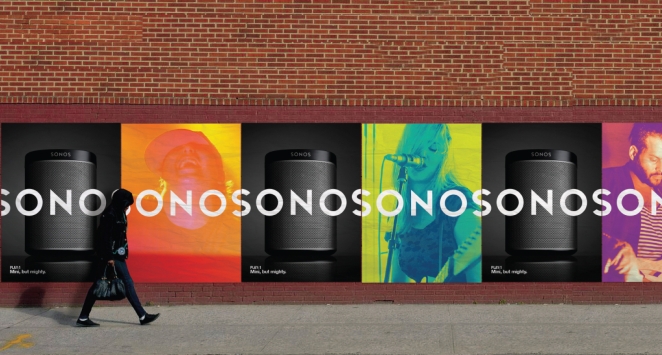
(I forget where I saw this quote) and that doesn’t get me excited to get up in the morning.. There are also some pretty innovative uses of it that are very creative so I’m not despondent yet. I was at a design conference where a lot of designers were talking about using it as if it’s just another tool. I don’t think it is. Especially when we consider the socio/economic and environmental impact too.
What do you think sets apart truly exceptional creatives from the rest of the pack?
The ability to start with a concept and end with an execution that’s beautiful but also true to the strategy.
How do you prioritize self-care and maintain a healthy work-life balance?
I sign up for running races — a half marathon is a big enough challenge that I know I need to get out and run, multiple times a week, despite everything else that’s going on. Running is my most dependable self-care tool. It works on both body and mind.
How do you handle creative blocks or burnout?
I don’t have much advice here! Except that I find being able to pause and just look and experience things offline can fill me up and inspire me again. Drawing or taking pictures lets me take in what’s happening around me whether its in nature or culture.
Do you have any websites, books or resources you would recommend?
Brand Thinking and Other Noble Pursuits by Debbie Millman. Interviews with a variety of brand designers
Eno, the film by Gary Hustwit. Love the experimental and generative aspect of it. And the subject is so engaging
